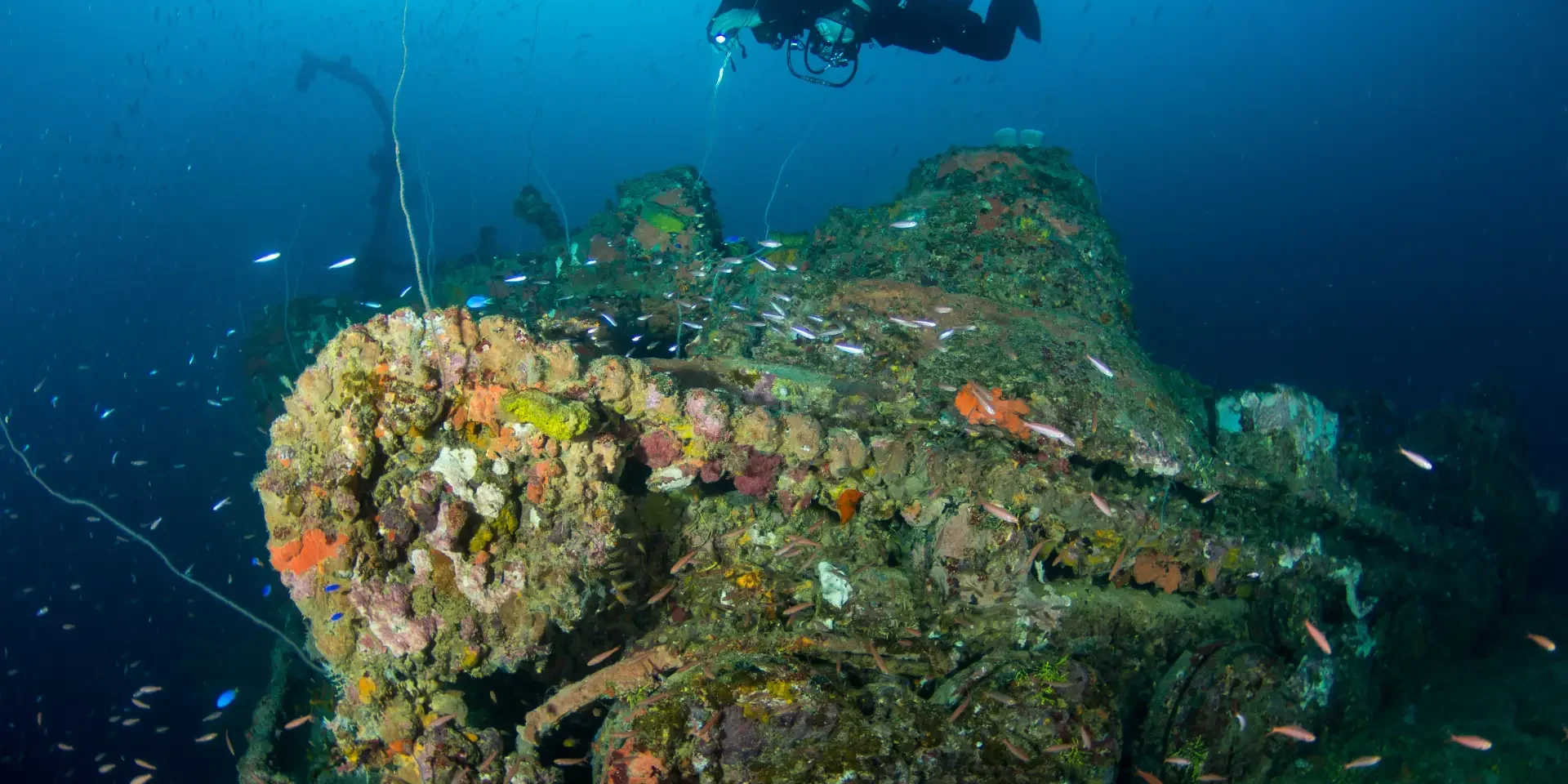Diving into History: The Allure of Truk Lagoon’s Wrecks
Truk Lagoon, also known as Chuuk Lagoon, is a name that resonates deeply within the diving community. Located in Micronesia, this iconic wreck diving destination is renowned for its unparalleled wreck diving opportunities, offering divers a unique chance to explore the haunting remnants of a pivotal World War II battle. The lagoon is a vast underwater museum, where history and marine life intertwine, creating an experience that is both educational and awe-inspiring.
The Historical Significance of Truk Lagoon
During World War II, Truk Lagoon was a critical stronghold for the Japanese Imperial Navy. Its strategic location in the central Pacific made it an ideal base for launching military operations. The lagoon was heavily fortified, serving as a hub for warships, submarines, and aircraft. However, in February 1944, Operation Hailstone, a massive assault by the United States Navy, changed the course of history. Over the course of two days, American forces launched a relentless bombardment, sinking more than 40 Japanese ships and destroying hundreds of aircraft. This decisive strike crippled Japan’s naval capabilities in the Pacific and left behind a submerged battlefield that has fascinated divers for decades.
Exploring the Wrecks
Diving in Truk Lagoon is like stepping back in time. The wrecks, now encrusted with corals and teeming with marine life, lie in varying depths, making them accessible to divers of all skill levels. Each dive offers a unique window into the past, with remnants of war still visible amidst the vibrant underwater ecosystem.
One of the most famous wrecks is the Fujikawa Maru, a former cargo ship that now rests on the lagoon floor. The ship’s holds still contain fighter aircraft, ammunition, and other wartime supplies, offering a haunting glimpse into its past. Divers can explore the ship’s superstructure, adorned with colorful coral and swaying sea fans, and encounter a variety of marine life, including lionfish, moray eels, and schools of jacks. The Fujikawa Maru is a must-see for any diver visiting Truk Lagoon, combining historical significance with natural beauty.
Another iconic site is the San Francisco Maru, known as the “Million Dollar Wreck” due to the valuable cargo it once carried. This cargo ship lies at a deeper depth, making it a more challenging dive suitable for experienced divers. The San Francisco Maru’s holds contain an array of military vehicles, including tanks, trucks, and mines, creating a surreal underwater landscape. The ship’s well-preserved state and the wealth of artifacts make it a highlight for those looking to delve deeper into the lagoon’s history.
The Human Element
While the wrecks of Truk Lagoon are remarkable historical artifacts, they also represent the human element of war. Each ship and aircraft is a vessel of stories—of bravery, sacrifice, and loss. Divers often find personal items, such as sake bottles, crockery, and even human remains, adding a poignant dimension to their underwater explorations.
The Shinkoku Maru is a particularly moving site. This tanker now lies encrusted with coral and inhabited by marine life. Divers can explore its engine room, bridge, and crew quarters, where remnants of daily life offer a glimpse into the experiences of those who served aboard. The ship’s hospital, complete with medical supplies and surgical equipment, serves as a stark reminder of the human toll of war.
Marine Life and Ecosystem
Truk Lagoon’s wrecks have become artificial reefs, providing a habitat for a diverse array of marine life. The warm, clear waters of the lagoon are home to numerous fish species, including butterflyfish, angelfish, and parrotfish. Larger marine creatures, such as reef sharks, rays, and turtles, are also commonly seen around the wrecks. The vibrant coral gardens that have grown on the sunken ships add a layer of beauty to the dives, creating a colorful and dynamic underwater environment.
Preserving the Legacy
As interest in Truk Lagoon’s wrecks continues to grow, so does the need for responsible diving practices. The delicate balance between exploration and preservation is crucial to ensuring that these historical sites remain intact for future generations. Divers are encouraged to adhere to strict guidelines, avoiding direct contact with the wrecks and minimizing disturbances to the marine life that now calls these structures home.
Efforts to protect Truk Lagoon’s underwater heritage extend beyond individual divers. Local authorities and international organizations collaborate to monitor the condition of the wrecks, implement conservation measures, and promote sustainable tourism practices. By fostering a sense of stewardship among divers and visitors, Truk Lagoon can continue to be a living museum that educates and inspires.
Conclusion
Diving in Truk Lagoon is an unparalleled experience that combines the thrill of underwater exploration with a deep connection to history. The lagoon’s wrecks stand as silent witnesses to a bygone era, offering a poignant reminder of the human cost of war and the enduring resilience of nature. Whether you’re an experienced wreck diver or a history enthusiast, Truk Lagoon provides a unique and unforgettable journey into the past. Through responsible diving practices and a commitment to preservation, we can ensure that this remarkable underwater time capsule remains a testament to the past and a source of wonder for generations to come.







